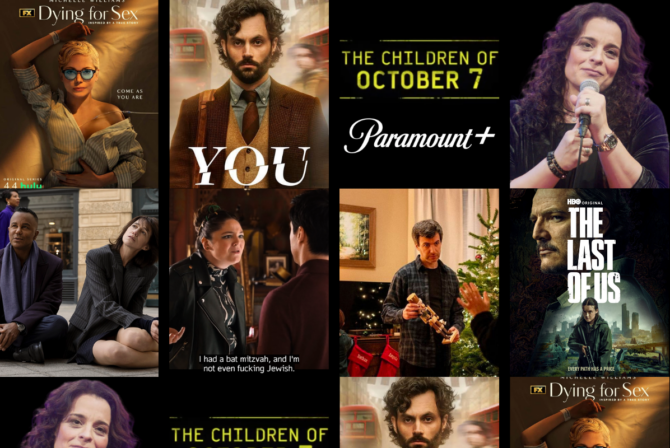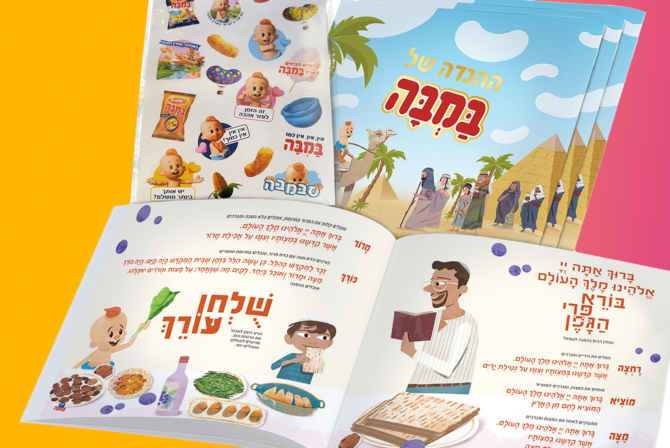We’re not precisely a typical Jewish family (if there is such a thing). Having grown up an atheist, I began celebrating the Jewish holidays when my partner, Emily, moved in and introduced my daughter and I to Judaism. Gradually my tiny daughter began to look forward to grape juice and challah on Friday nights, choosing to call her new stepmother “Ima.”
Over time, our little queer interfaith blended family began to attend synagogue for Shabbat services. Learning Hebrew letters became a fun pastime for our kid, and havdalah a weekly fixture to punctuate the week. I learned to bake apple and honey cake for Rosh Hashanah and that became a tradition, too.
READ: The Amazing Event That Was My Son’s Gay Jewish Wedding
At some point in the last year, our family became more Jewish than non-Jewish, more faith than inter-faith, more in the tent than outside of it. I have some studying to do, but it looks like a visit to the mikveh for conversion could be in my future, and our daughter is already tossing around bat mitzvah party ideas (a little prematurely—she’s now 8). It’s been an important shift for us, full of delights and surprises, and one that I know we would not have been able to make without the explicit welcome that Reform Judaism offers to queer families.
Pride Shabbat has become an annual event at our local Reform synagogue, Temple Beth Israel, in Melbourne, Australia. The service coincides with Midsumma (Melbourne’s Pride festival) and is advertised to the wider LGBTIQ community as well as to the local Jewish neighborhoods. Unlike the US, Australian Jews are predominantly Orthodox, and we don’t have any synagogues that are for and run by the queer community. Although groups like Keshet are making wonderful progress here, acceptance is by no means universal. Temple Beth Israel’s Pride service was a first for Australia—a country in which same-sex marriage is still not permitted, and transgender people still have no employment protection.
READ: How My Jewish Grandma Came to Embrace My Gay Marriage
The first year we attended, we took pause as we approached the synagogue gates. Up on the flagpole was the most beautifully vibrant rainbow flag emblazoned with the Star of David. Even our daughter, who was 4 at the time, was well aware of the significance of this symbol. That flag said not only you are welcome, but also we are proud of you.
During that first Shabbat service I was there as a visitor to the community, but it was a joy to soak up the atmosphere. Some Jews from other congregations in our predominantly Orthodox area had made the journey back to shul for the first time in many years. Their emotion at finding acceptance in the Jewish community without having to hide their identity was palpable, and I was not alone in being moved to tears.
Regulars from our shul who are not normally part of the LGBTIQ community came along to openly offer support, and the rabbis gave their unconditional backing to not only this one event, but to the pursuit of LGBTIQ rights as human rights. My daughter was doing cartwheels in the foyer with other children of lesbians, and I was floating around in a joyful haze. Clutching my partner’s hand, something in me softened and opened. Here was a safe space, here was a welcoming community, and here was something like freedom from exile.
READ: How My Wife & I Created a Surname of Our Own
Pride Shabbat is now an annual event for our family as well as our shul. Each year we feel a sense of anticipation as the billboards go up on our local streets. It is particularly important to me that the shul advertises the event so widely. It is clear that this is not a service that merely mollifies the LGBTIQ members of the congregation: This is a public statement about what it means to be religious and accepting of all sexualities and gender identities.
Rabbi Kim Ettlinger, speaking publicly about the Pride Shabbat service, explained that, “We are all made in God’s image, we are all essentially equal. We need to respect that, and that takes primacy for us as progressive Jews.” As this year’s honored guest, transgender woman Margot Fink, put it, “The message the Pride Shabbat sends to other religious groups is also significant… it shows if Judaism can be inclusive and embrace progress, so too can other faiths.”
I wasn’t raised by religious parents, although I did sometimes attend our local church. But I grew up surrounded by people who were informed by the so-called “values” of their religions: religions that practiced hatred towards LGBTIQ people. I had a teacher in high school who openly called for the stoning of homosexuals, even though, or perhaps because, he knew my friend’s gay uncle had just died of AIDS. My own grandmother told me that her god wanted to wipe out gay people. No wonder I grew up vehemently atheist!
Religion was not safe for me then, and in many ways, the wider world still feels unsafe for me now. I can’t legally marry my partner here in Australia. Our daughter tells us that she feels lonely, and different, and she is sometimes afraid to “admit” that she has queer parents.
READ: When You’re Queer, Finding a Mikveh Isn’t Exactly Easy
But at shul she hears a different message: We are all made in God’s image; we are all equal. In a country where religious organizations are still exempt from anti-discrimination legislation, it is important and powerful to have religious communities set the standard for LGBTIQ inclusion. A religious background or faith does not constitute an excuse for bigotry. Acceptance and love, justice and human rights, are values far too important to be swept aside. They are the values I want my daughter to learn.
As we light our candles each Shabbat, it is as a family: queer, blended, and not born Jewish, yet welcomed with love and acceptance by each other, and by our community.







